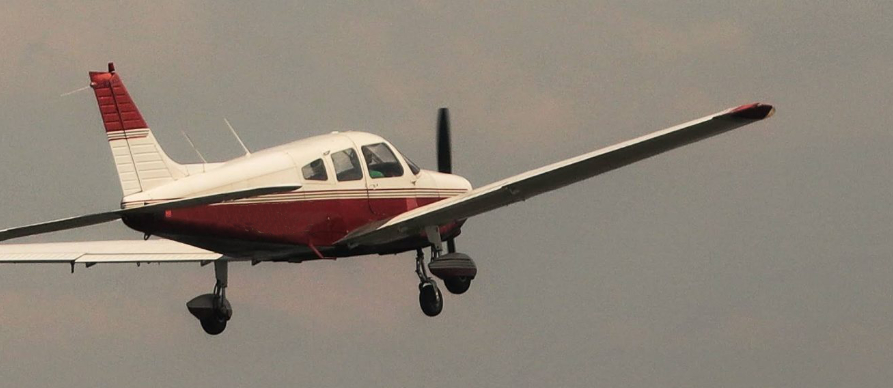
Engine failure can happen at any time. You should always be prepared for this eventuality. To make processing the sequence of events that you will need to execute easier at a time of high stress, pressure and have a million thoughts running through your head we use the mnemonic “ABCDE“. This procedure should be learned and be practiced regularly to ensure that in the event of losing an engine whilst in flight, you will react to the emergency in a manner that will increase the odds of your survival.
Here’s a breakdown of what each letter in the mnemonic ABCDE stands for:
- A – Airspeed: Maintain the best glide speed for your aircraft. This speed gives you the best chance to cover the maximum distance while descending slowly, giving you more time in the air to find a suitable landing spot. Any speed higher or lower than best glide speed will cause you to descend more rapidly. It is essential that you know the best glide speed for the aircraft you are flying before you takeoff – searching for this speed when an engine failure occurs could be the difference between successfully landing the airplane at a suitable landing site and – not!
- B – Best place to land: Identify the best and closest place to land safely. This could be an airport, a field, a road, or any open area free of obstacles. When you are flying it’s good practice to constantly be on the lookout for suitable spots as you go. Remember the best spot to land might be behind you so look all around.
- C – Checklist: Go through the engine failure checklist / flow to try to restart the engine. The biggest cause of an engine losing power in a GA airplane is fuel starvation. Actions include switching on the electric fuel pump, switching fuel tanks (to tank containing fuel), ensuring the mixture is rich, turning on the carburetor heat, checking ignition, and completing engine restart procedures.
if the engine does not restart - D – Declare an emergency: Contact either you current, last or a known air traffic control (ATC) frequency or use the emergency frequency (121.5 MHz) to declare an emergency. MAY MAY MAY Provide the controller with your location, your emergency situation, number of souls (people) on board and you intentions, along with any other relevant information.
- E – Execute: Execute your landing plan. Fly the aircraft towards the chosen landing spot, manage your descent, and perform a forced landing. Complete actions such as turning off the fuel, electrical and fuel systems. Ensure seat belts are secure and tight. Crack open the door to help evacuation in the event of a hard landing.
Checklist
- AIRSPEED (best glide) 73 KIAS
- BEST PLACE TO LAND LOCATE
- CHECKLIST / COCKPIT FLOW
- FUEL PUMP – ON
- FUEL SELECTOR – FULLEST TANK
- MIXTURE – RICH
- CARB HEAT – ON
- STARTER – ENGAGE
- MAGNETOS – BOTH
- ENGINE GAUGES – CHECK
- ENGINE RESTART – CHECK ENGINE RESTARTED
IF ENGINE DOES NOT RESTART
- DECLARE
- RADIOS – LAST or KNOWN ATC FREQ / 121.5 / “MAY DAY”
- TRANSPONDER – 7700
- ELT – ACTIVATE
- EXECUTE LANDING / EXIT – PREPARE FOR LANDING
- FINAL APPROACH – (Flaps 40°) 63 KIAS
- MAGNETOS – OFF
- MASTER SWITCH – OFF
- ALTERNATOR SWITCH – OFF
- FUEL SELECTOR – OFF
- MIXTURE CUT- OFF
- SEATBELTS – SECURE
- DOOR – UNLATCH